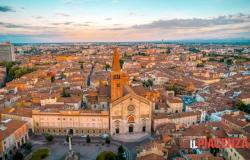After the announcement of the dinner offered by the President of the Italian Republic, Sergio Mattarella, to the Heads of State and Government of the G7 which will have the Swabian Castle of Brindisi as its venue, this valuable monument of medieval defensive architecture has risen to national news and international. Confirming its historic military inviolability, the Brindisi Castle prevailed over as many famous Apulian castles and seemed the most suitable, and above all safest, place to host such a representative event on a global intergovernmental level. Let’s try to learn more about the history of this important monument, for the benefit of those who have never visited it.
Emperor Frederick II of Swabia (1194-1250), who was responsible for the construction of the Castle, favored Brindisi among the seaside cities, which he affectionately called “Filia Solis”, or “Daughter of the Sun”. The Swabian sovereign loved the Salento capital not only for its strategic geographical position and for its natural port, which guaranteed protection from enemy attacks and the fury of nature, but also for the healthiness of the air, for the luxuriance of nature, for the goodness of its food and wine products and, last but not least, for the affability and multiculturalism of its inhabitants.
The chronicler Riccardo di San Germano, who describes the events of the Kingdom of Sicily in the period between 1189 and 1243, places the foundation of the castle in 1227. It is the emperor himself – according to the chronicler – who ordered its construction within West of the port. According to Frederick’s wishes, its size had to be imposing, to the point of being able to stand comparison with the castle network promoted by his Norman predecessors.
Over the centuries, and subsequent dominations, the Castello Svevo or Federiciano – named in homage to its founder – underwent numerous, and necessary, structural adjustments, which will lead it to take on its current features. With Charles I of Anjou the towers were raised and, between 1272 and 1283, the construction of a royal palace began, intended to guarantee the necessary residential comforts for the sovereign. In the mid-fifteenth century, with the development of modern artillery, the Castle underwent the most significant alterations under Ferdinand I of Aragon, known as Ferrante, king of Naples from 1458 to 1494: the perimeter was expanded with a further city wall, more lower and massive than the previous one, equipped with circular towers. The mass guarantees a greater presence of the garrison and, in case of emergency, the shelter of the population.
At the end of the fifteenth century, when the city of Brindisi and the Swabian-Aragonese Castle came under the protectorate of the Republic of Venice, the manor was officially defined by the Venetian doge: “Beautiful and very strong, which dominates the city and the other castles”.
In the sixteenth century, following the invasion of the city by pro-French troops, the Castle structure underwent further fortification with the raising of the parapets and the construction, close to the sea, of the Levante Bastion and the Campanella Bastion.
As happened to various castles in Puglia, the one in Brindisi was also used as a penitentiary in the nineteenth century, until at the beginning of the twentieth century – including the strategic position of Brindisi in the Mediterranean in general and in the Adriatic in particular – it became the headquarters of the Navy Command and today the headquarters of the San Marco Marine Brigade Command.
The fulcrum of the entire castle complex is the large trapezoidal courtyard, surrounded by a high wall with an access keep and six towers, two circular in shape, three quadrangular and one polygonal. The courtyard, as is typical of castles, is also known by the name of “parade ground”, because it housed the troops and artillery pieces inside. In the keep leading to the courtyard, the historic Angevin chain is on display, used in the 14th century to block access to the port to unwanted boats.
Sovereigns, Heads of State and Government have always found a worthy welcome or shelter in the Swabian Castle of Brindisi, including the King of Italy Vittorio Emanuele III who, in order not to fall into the hands of the Germans, made it his residence and the seat of government from 10 September 1943 to 11 February 1944. In that period, not exactly glorious, Brindisi became the capital of Italy. Eighty years later, on 13 June 2024, Brindisi will become the capital of the world.






